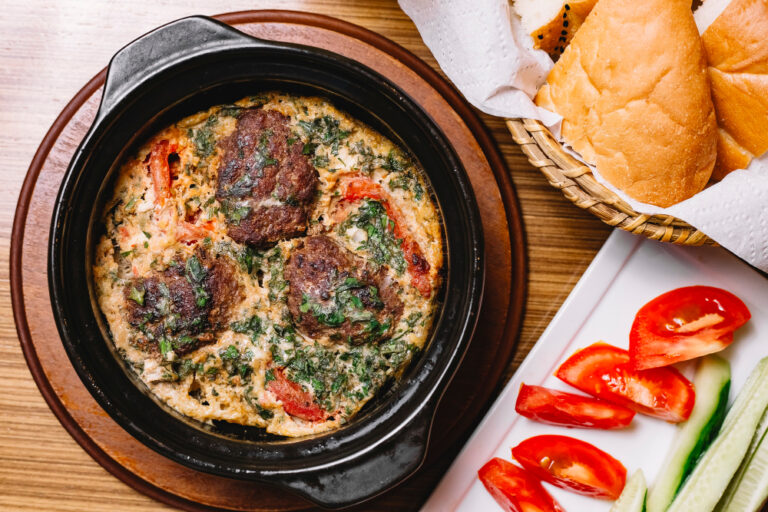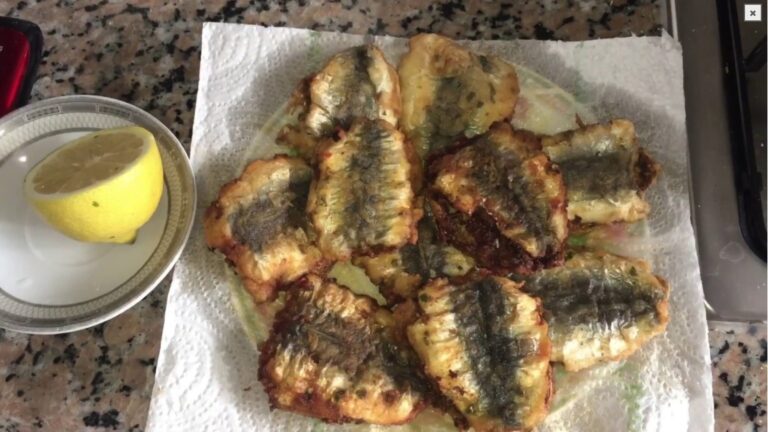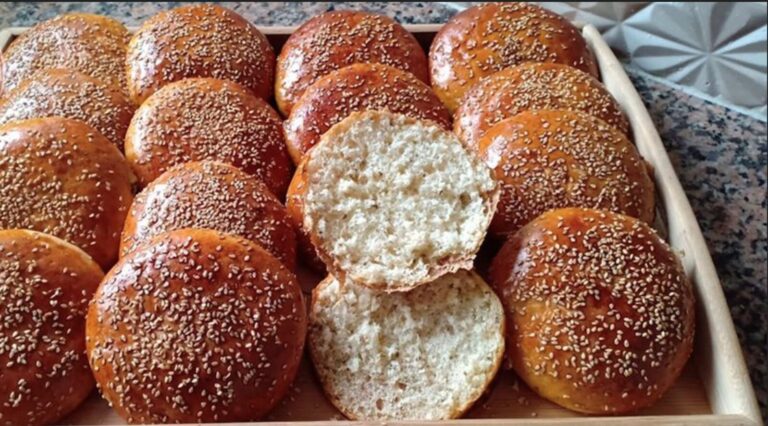
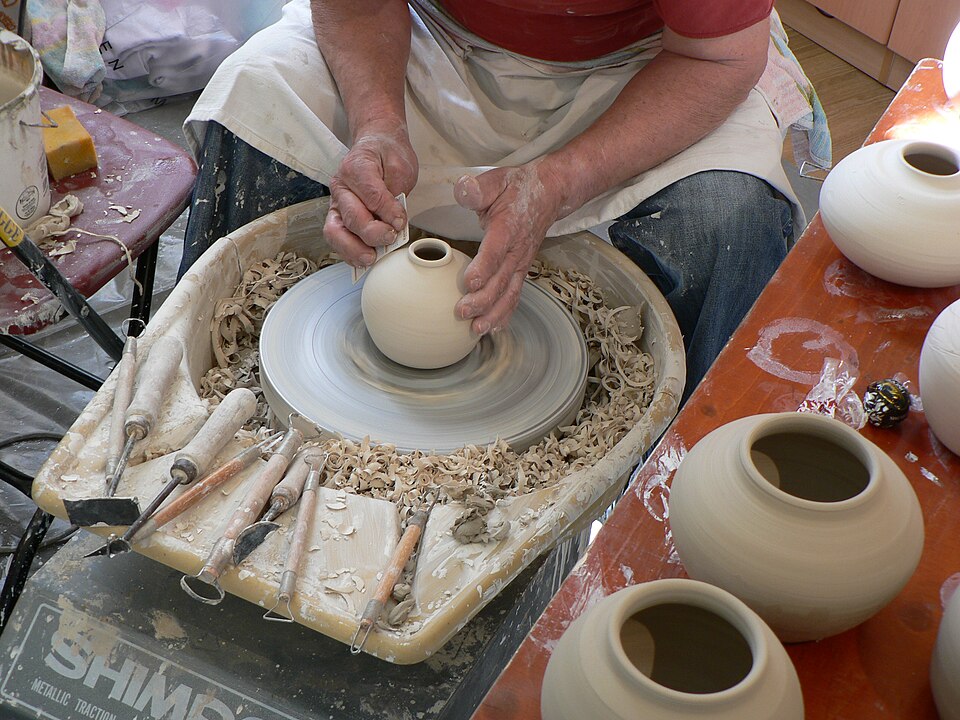
Among the dusty paths of Moroccan villages and the vibrant souks of its imperial cities, the scent of earth and smoke fills the air — a sign that ancient hands are still molding clay into art. Clay and Fire: The Magic of Moroccan Pottery tells the story of how Morocco transforms simple earth into timeless beauty.
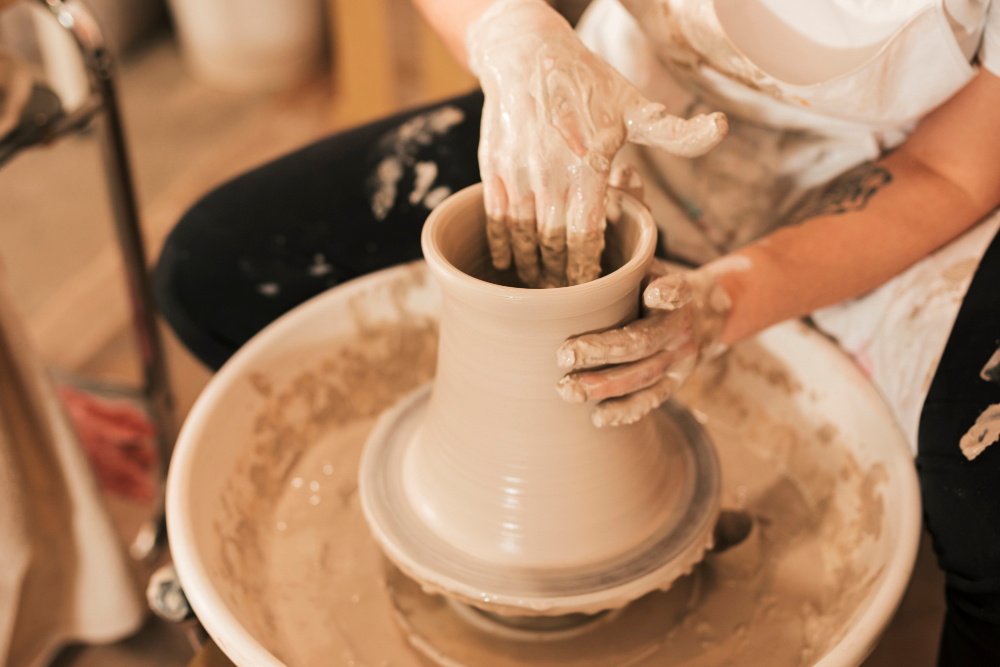
From the blue-glazed ceramics of Fes to the earthy tones of Marrakech, pottery here is more than a craft — it’s a reflection of Moroccan identity. Passed down through generations, it carries the marks of Berber, Arab, and Andalusian influences, shaping not just objects but an entire way of life.
If you’ve ever admired a hand-painted tagine, a mosaic zellige tile, or a rustic water jar, you’ve already witnessed the harmony of clay and fire — the magic that defines Moroccan pottery.
The Roots of Clay and Fire: A Living Art
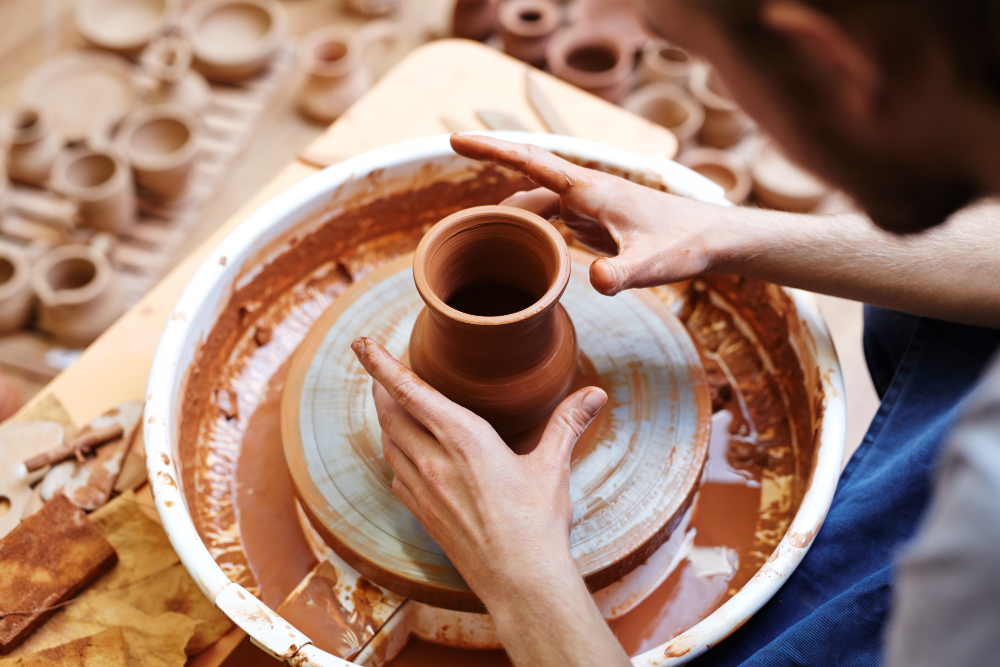
Pottery in Morocco dates back to prehistoric times, evolving through centuries of artistry, trade, and tradition. Each region has developed its unique style and purpose, yet the essence remains the same — a union between earth, water, air, and fire, the four elements of life.
Fes – The Soul of Ceramic Art
The city of Fes, Morocco’s spiritual and cultural heart, is world-renowned for its pottery and blue-and-white ceramics. The Fes el-Bali medina (source) is home to traditional workshops where artisans knead clay by hand, mold it on foot-powered wheels, and fire it in ancient kilns. The patterns — often geometric and floral — are inspired by Islamic art and centuries of tradition.
Safi – The Capital of Pottery
On Morocco’s Atlantic coast lies Safi, considered the capital of Moroccan pottery. Its coastal clay and skilled artisans produce beautiful orange-red earthenware and colorful glazed bowls. Visitors can explore the Pottery Hill, where hundreds of workshops shape and fire their creations daily, filling the air with the scent of smoke and wet earth.
Tamegroute – The Green Oasis of Clay
Further south, near the Sahara, lies Tamegroute, a village famous for its distinct green-glazed pottery. Using local clay and mineral-based glaze, artisans create pieces that seem to shimmer under the desert sun. The color green, symbolizing life and Islam, has made Tamegroute pottery a prized collectible across Morocco and beyond.
Must-See Pottery Experiences in Morocco
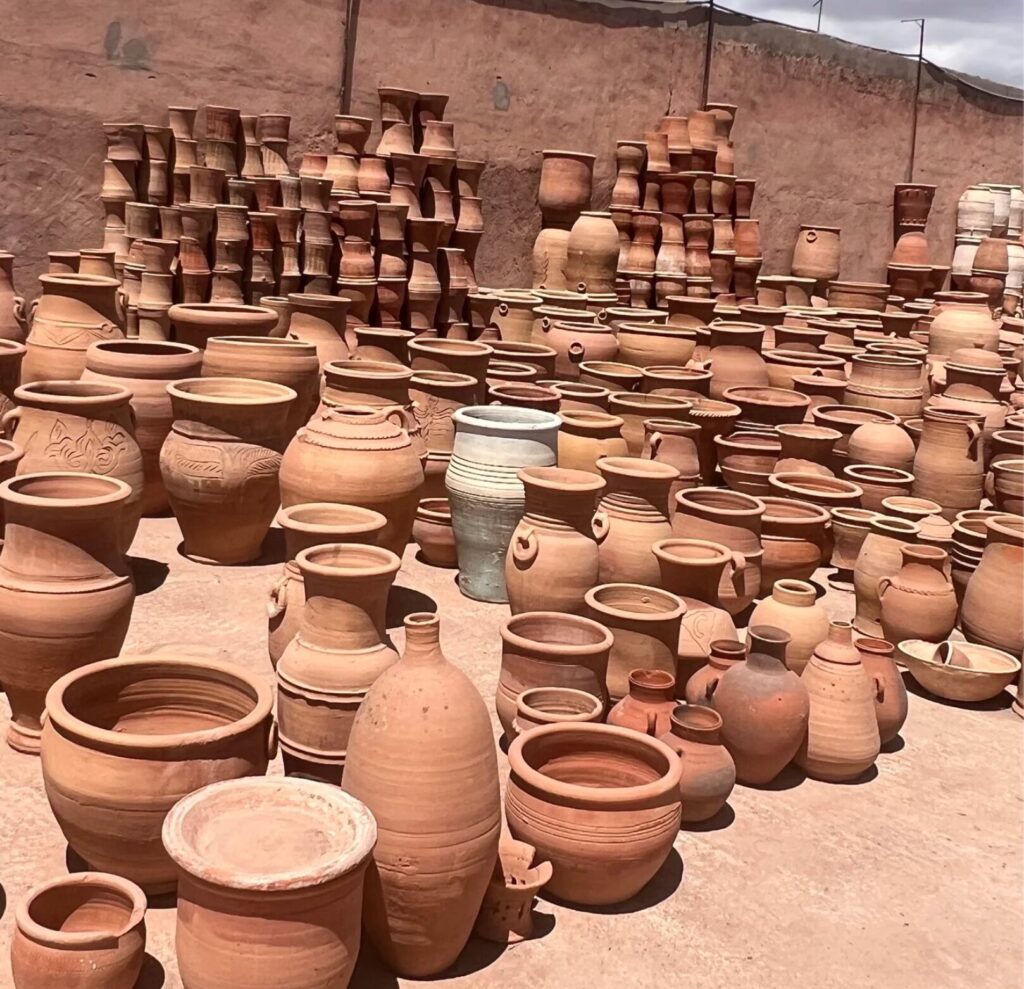
Whether you’re an art lover or a traveler seeking authenticity, Morocco offers countless ways to experience its pottery heritage.
1. Visit a Traditional Pottery Workshop
In cities like Fes, Safi, or Marrakech, you can step inside small family-owned workshops. You’ll see artisans spin clay on wheels, paint intricate motifs by hand, and stoke fire in centuries-old kilns. Many workshops welcome visitors to try their hand at the craft — shaping a small bowl or painting a tile.
2. Explore Pottery Souks and Markets
No Moroccan trip is complete without a stroll through a pottery market. The Souk el Henna in Fes, Safi’s Pottery Market, and Marrakech’s souks overflow with vibrant pieces — tagines, vases, plates, and tiles — each telling its own story. The experience is as visual as it is cultural, filled with colors, patterns, and the hum of negotiation.
3. Visit Pottery Museums and Cultural Centers
Don’t miss the National Ceramics Museum in Safi, which showcases Morocco’s pottery evolution through time. You can also explore the Dar Batha Museum in Fes (source), where ancient ceramics and pottery tools reveal the soul of Moroccan artisanship.
Travel Tips and Cultural Insights
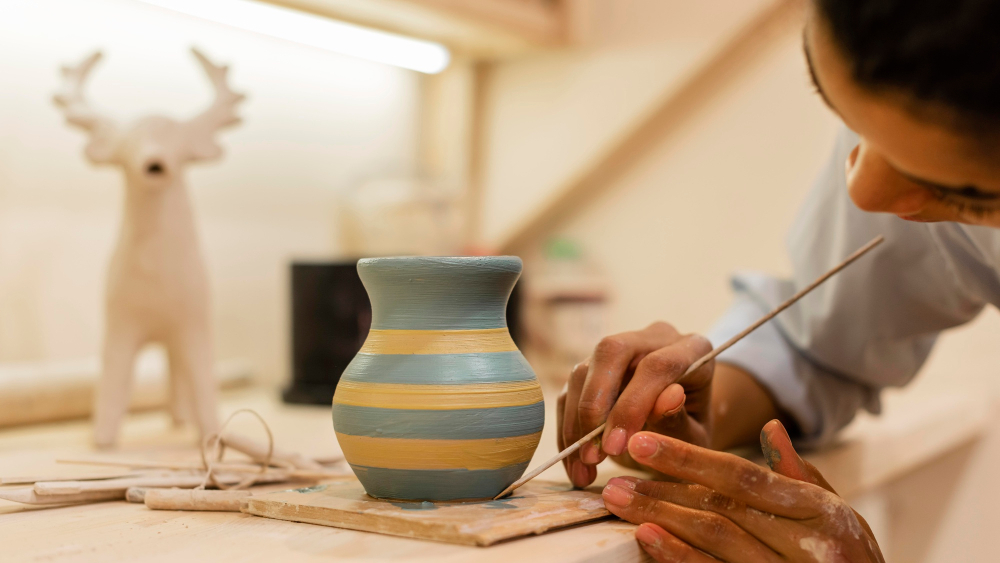
To truly appreciate the magic of Moroccan pottery, understanding the cultural and symbolic meanings behind it makes all the difference.
- Colors Have Meaning: Blue symbolizes protection, green represents life and paradise, while white stands for purity.
- Shapes Reflect Function: Shallow bowls for serving, deep jars for storing, and domed tagines for cooking — every curve has a purpose.
- Pottery and Hospitality: In Moroccan culture, pottery is deeply tied to hospitality. Guests are often served tea, couscous, or tajine in beautifully crafted clay dishes — because sharing food is sharing the heart.
Pro Tip: If you plan to buy pottery in Morocco, remember to ask if it’s food-safe (especially for tagines). Authentic handmade pottery may have small imperfections — signs of its uniqueness and craftsmanship.
Stories from the Kiln: Travelers and Artisans
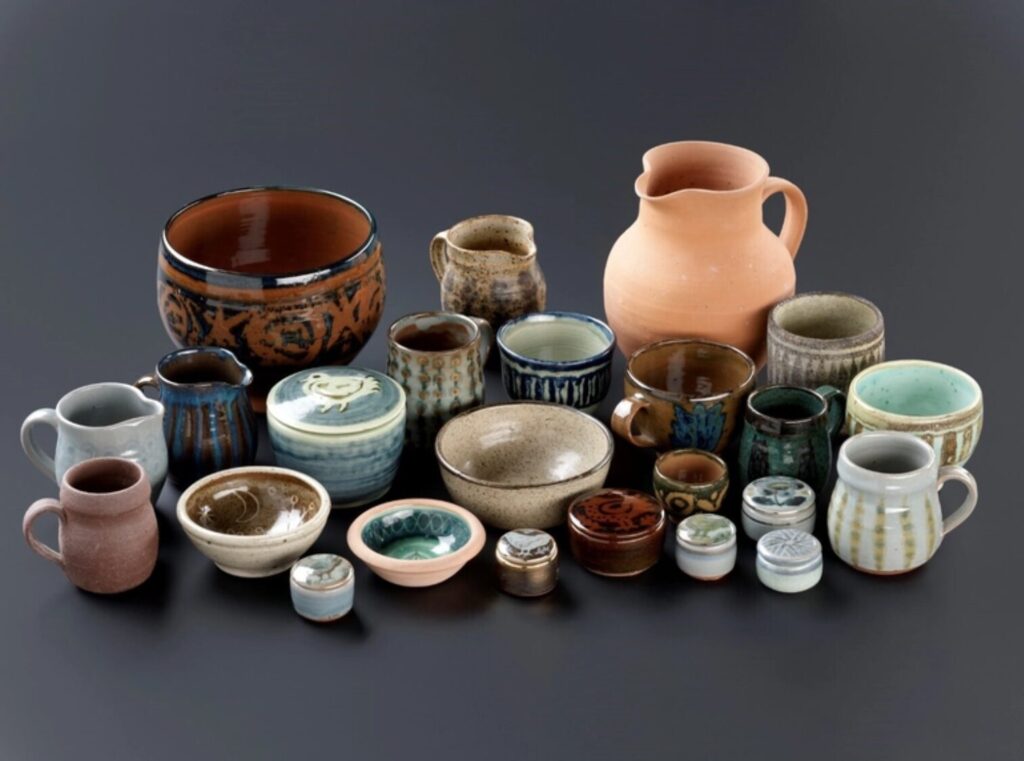
Travelers often describe their visits to Moroccan pottery villages as unforgettable.
Maria, a tourist from Italy, recalls her day in Safi:
“I stood in front of an old kiln, feeling the heat on my face as a young craftsman pulled out glowing pots with a stick. His father told me, ‘The fire is our teacher — it decides what survives.’ I realized pottery here isn’t just made; it’s born.”
Similarly, Ahmed, a potter from Tamegroute, explains how his family has practiced pottery for six generations:
“The clay comes from our land, the glaze from our earth, and the fire from our sky. Each piece holds a part of Morocco’s spirit.”
These encounters reveal why Clay and Fire: The Magic of Moroccan Pottery isn’t only about art — it’s about resilience, patience, and the poetic bond between humans and nature.
When and Where to Experience Moroccan Pottery
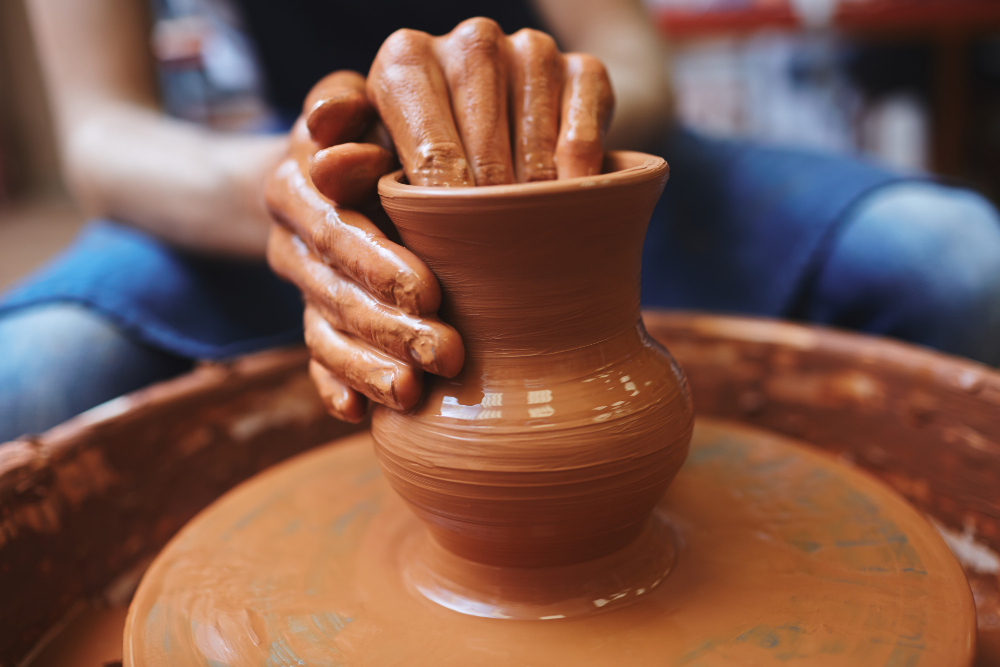
Best Time to Visit
Pottery workshops are open year-round, but spring and autumn are ideal for travel, offering pleasant weather for exploring Morocco’s artistic cities.
Recommended Destinations
- Safi: For raw authenticity and workshops with live demonstrations.
- Fes: For intricate designs and museum-quality pieces.
- Tamegroute: For unique desert-green pottery you won’t find elsewhere.
- Marrakech: For a mix of traditional and modern pottery, blending art and fashion.
Special Events
Look for cultural events like the Safi Pottery Festival, which celebrates artisans with exhibitions, live demonstrations, and markets.
FAQ – Clay and Fire: The Magic of Moroccan Pottery
What makes Moroccan pottery special?
Moroccan pottery combines ancient craftsmanship with artistic expression. Each region has unique styles, glazes, and designs influenced by local traditions and Islamic art.
Where can I see pottery being made in Morocco?
You can visit pottery villages and workshops in Safi, Fes, Marrakech, and Tamegroute, where artisans craft pieces by hand using age-old techniques.
Can tourists learn pottery in Morocco?
Yes! Many workshops offer hands-on classes where visitors can shape clay, paint designs, and understand the firing process.
Is Moroccan pottery safe to use for food?
Most traditional tagines and bowls are safe for food once glazed and fired. Always confirm with the seller to ensure it meets food safety standards.
What are the best souvenirs to buy?
Popular items include tagines, ceramic plates, tiles, and decorative bowls. Each piece makes a meaningful and authentic Moroccan keepsake.
Conclusion
The story of Clay and Fire: The Magic of Moroccan Pottery is one of transformation — where raw earth meets artistry, and simplicity turns into splendor. Every pot, plate, and tile carries centuries of tradition, echoing Morocco’s creative heartbeat.
Whether you’re wandering through the bustling markets of Marrakech or the quiet workshops of Safi, the hum of the potter’s wheel and the glow of the kiln tell a tale older than time.
So, when you hold a Moroccan ceramic in your hands, remember — it’s not just pottery. It’s Morocco’s history, soul, and spirit molded by clay and fire.

